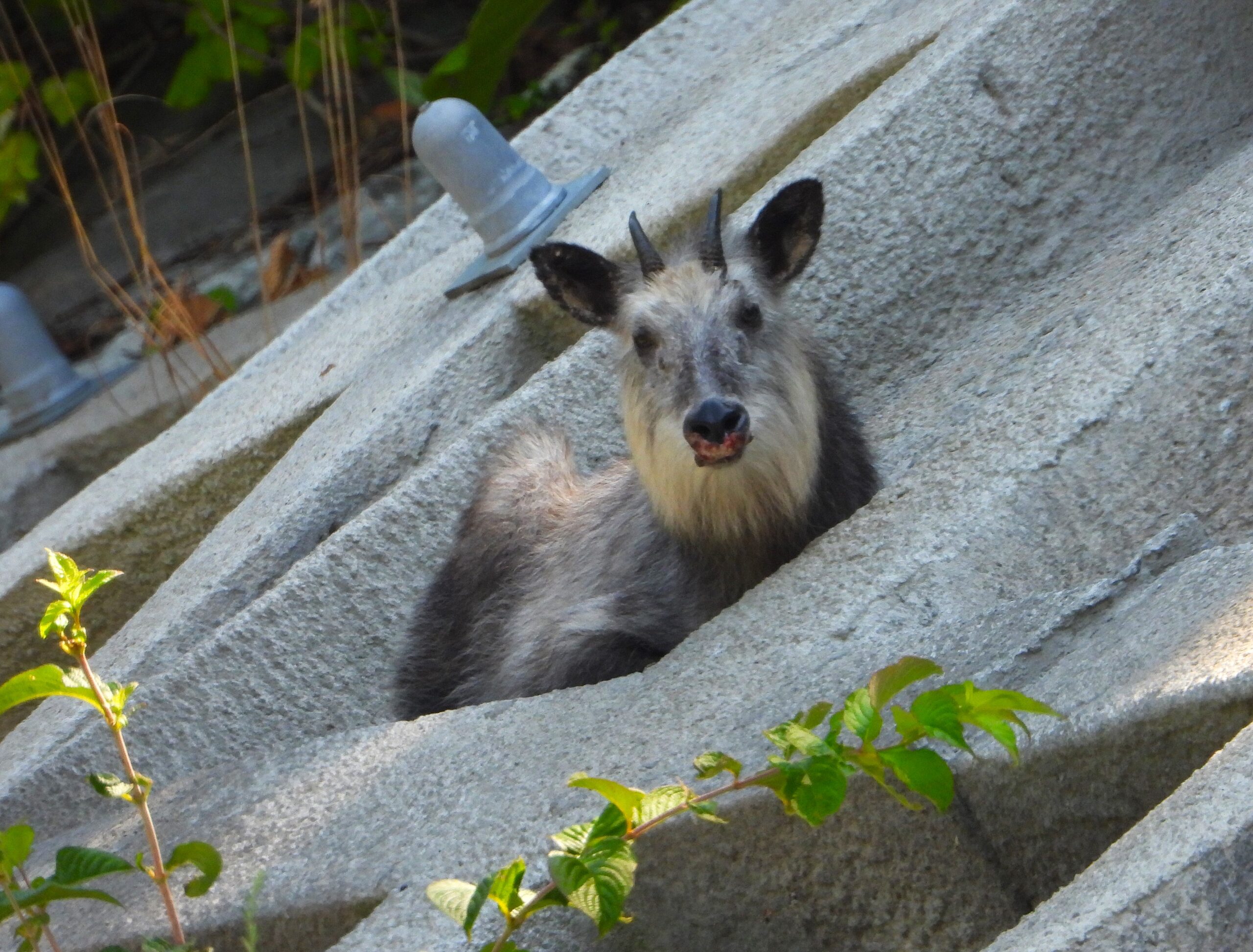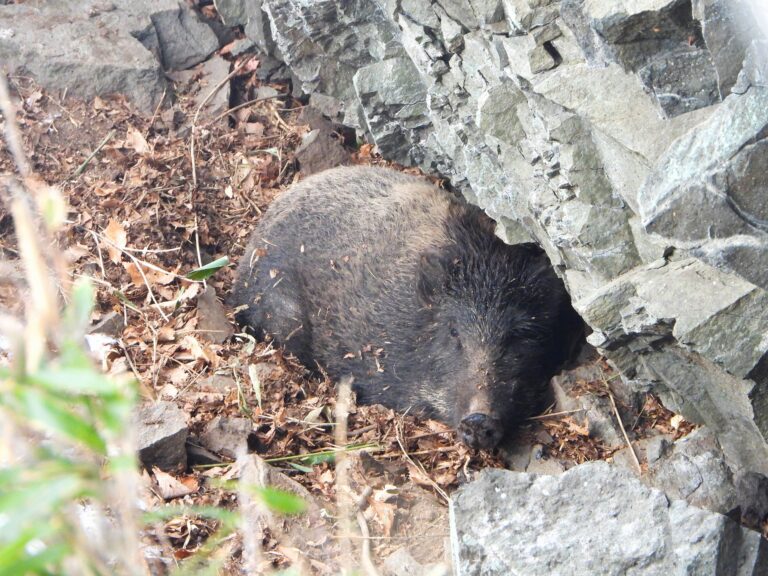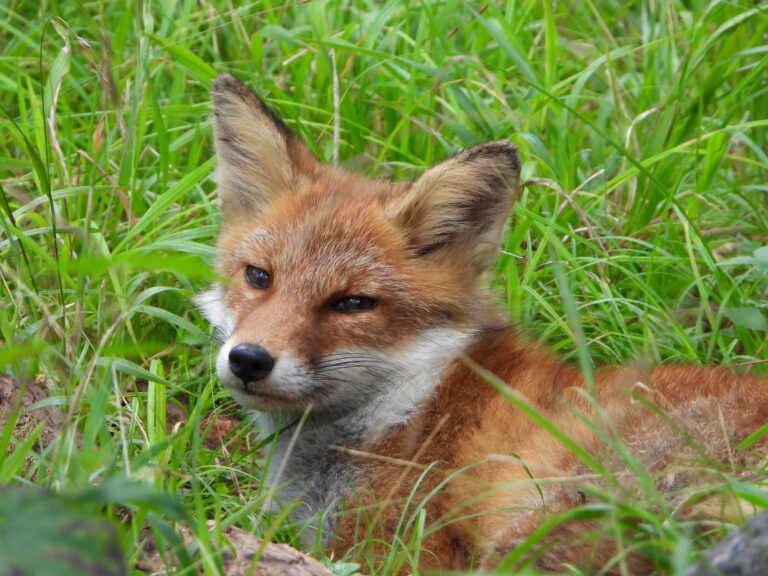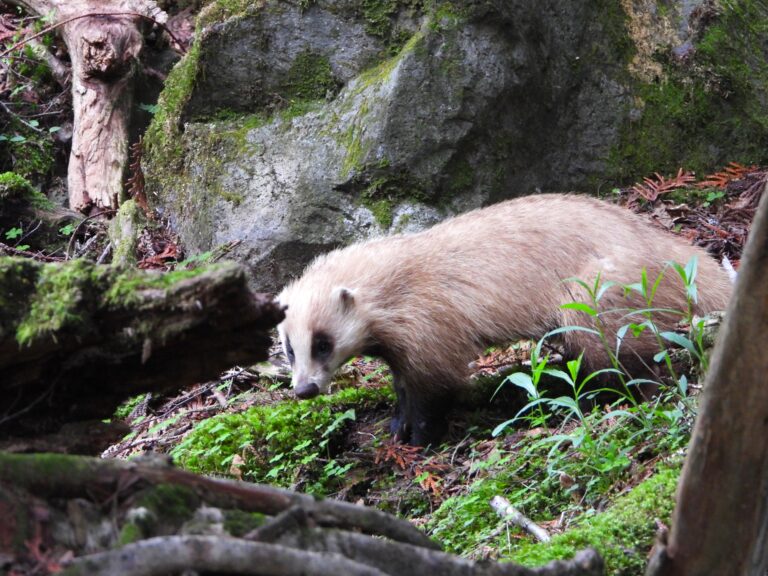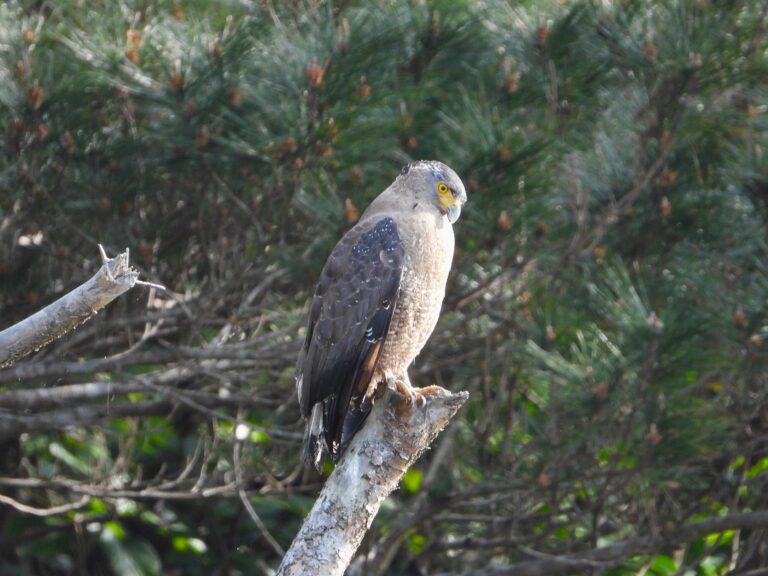Japanese Serow (Capricornis crispus) – Wildlife of Japan
Introduction
The Japanese serow (Capricornis crispus), or “kamoshika,” is an endemic mountain ungulate of Japan. Although deer-like at a glance, it belongs to the Bovidae family and is closer to goats and antelopes. Designated a Special Natural Monument of Japan in 1955, this elusive species has long been regarded as a symbol of the nation’s wilderness.
Appearance
A compact, powerful build (body length about 100–120 cm; 30–45 kg) helps the serow navigate cliffs and dense undergrowth. The coat ranges from gray to charcoal with coarse guard hairs; the face often shows pale patches around the muzzle and eyes. Both sexes carry short, backward-curving horns. A thick neck ruff and sturdy legs complete its goat-like silhouette.
Habitat
Japanese serows inhabit cool, mountainous forests across northern and central Honshu, with fragmented populations in parts of Shikoku and Kyushu. They favor steep, mixed or broadleaf woods with rocky outcrops and limited disturbance. Individuals keep small home ranges on ridges and ravines and use preorbital scent glands to mark favored paths and resting ledges.
Behavior
Mostly diurnal to crepuscular, serows spend early morning and late afternoon foraging, then stand motionless to watch from shaded perches. Their movement is deliberate—short climbs, steady footing, and sudden, springy bounds when threatened. Mothers accompany their young for extended periods before the juveniles disperse.
Diet
A flexible browser, the serow feeds on leaves, shoots, herbs, bamboo grass, and ivy; in winter it turns to twigs and bark. This varied diet allows it to persist in poor, snow-bound seasons where other grazers would struggle.
Reproduction
The rut occurs in autumn. After roughly seven months of gestation, a single calf is born in late spring. Newborns hide in cover while the mother forages nearby; weaning is gradual, and yearlings remain with the dam before establishing their own range.
Conservation
Once overhunted, the species recovered after legal protection was introduced. It was first designated a Natural Monument in 1934 and upgraded to a Special Natural Monument in 1955. Populations are now stable in many mountain regions, though occasional conflicts arise where serows browse young trees or crops. The Japanese serow is assessed as Least Concern globally.
Author’s Impression
When encountering a Japanese serow in the forest, I am often struck by how little fear it shows. Instead of fleeing, it will stand quietly and watch, as if observing me in return. Perhaps this calm nature contributed to its past overhunting. Regardless, the serow carries an aura of dignity, and every meeting feels like a sacred moment in Japan’s mountains.

